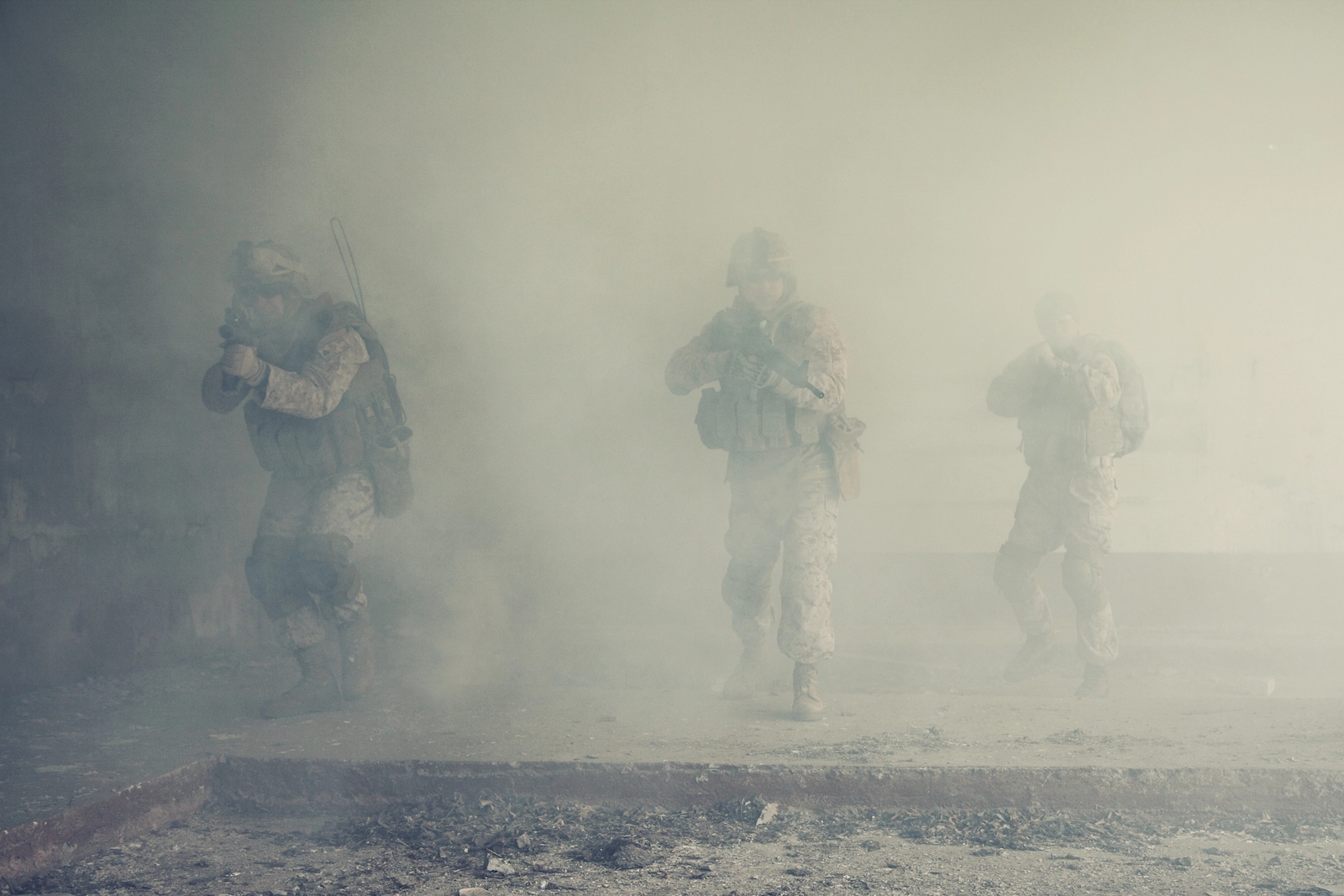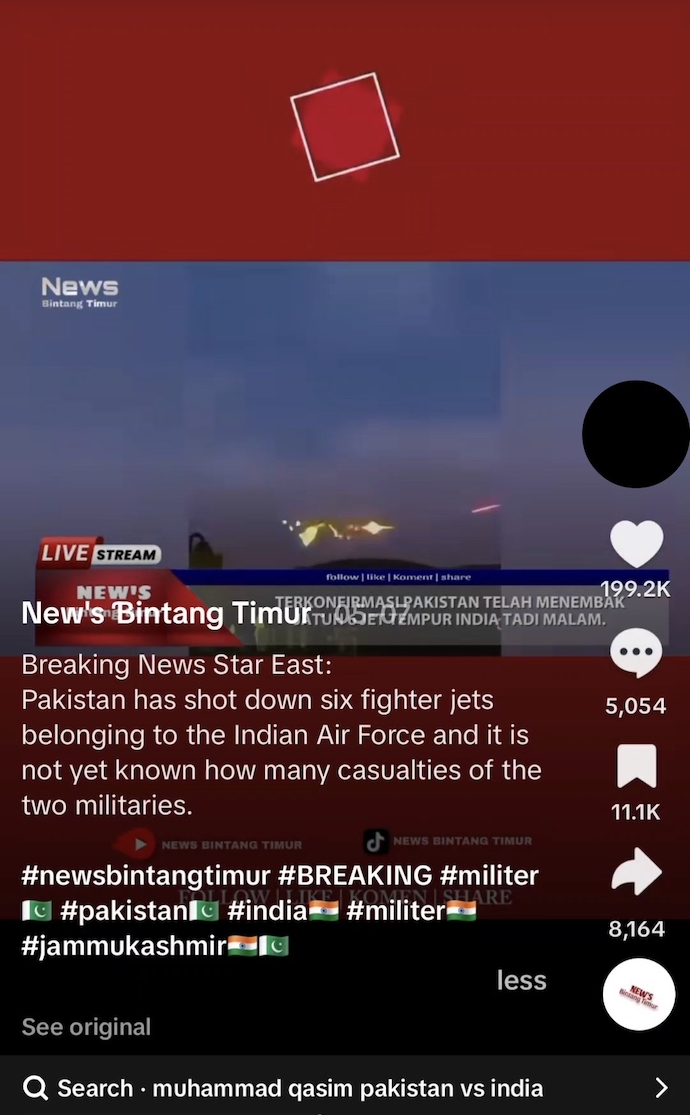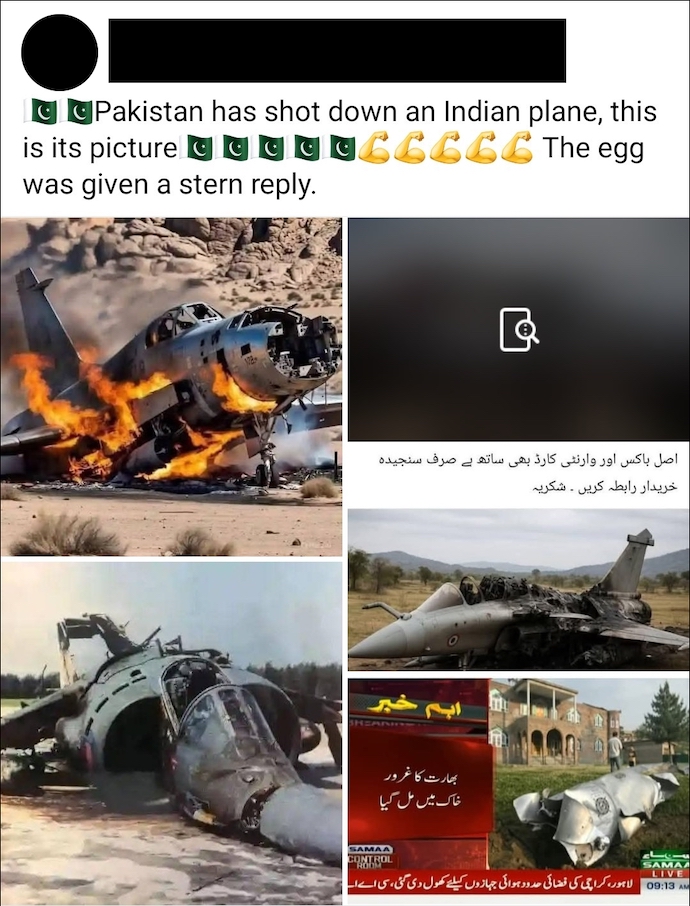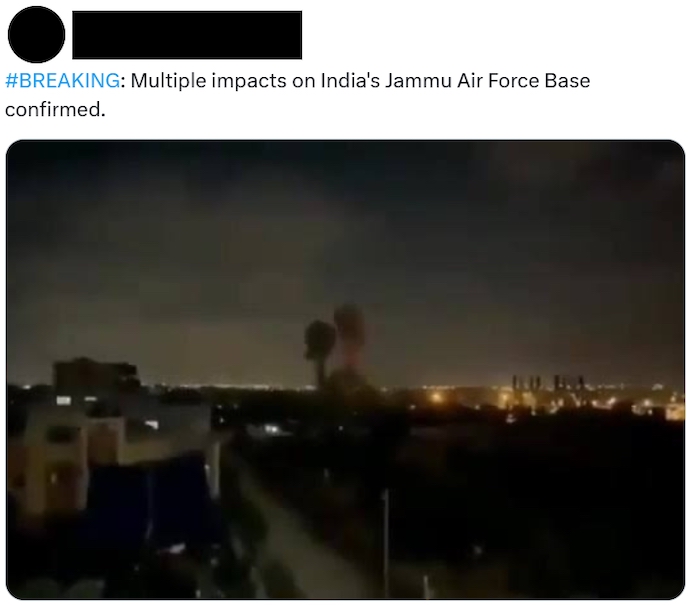
The Fog of War, Rewritten by Algorithms
War has always been both a contest of force and perception—of who can see clearly when the smoke thickens. In May, as Indian and Pakistani forces exchanged fire from Kashmir to Punjab, the old “fog of war” collided with a modern one: an attention economy where rumor outruns reconnaissance. Clausewitz called war “the realm of uncertainty.” In an age of infinite feeds, that uncertainty has multiplied—accelerated by speed, virality, and the compulsion to react before verifying.
Falsehoods moved through the India–Pakistan crisis like a system: recycled videos, AI-assisted images, video-game clips masquerading as combat, and politically charged claims—all rewarded by platforms designed to maximize engagement. The result was a parallel battlefield where perception outpaced reality, and even senior officials became consumers—and sometimes amplifiers—of untruths.
The classical fog of war stems from incomplete information: soldiers misreading movements, commanders relying on fragmentary intelligence. Misinformation thrives in this vacuum, not necessarily from malice—disinformation is deliberate; misinformation is mistaken—but because conflict scrambles signals. Official updates lag, and speculation rushes in to fill the void, boosted by imagery and outrage.
The May crisis reignited one of the world’s most combustible rivalries that traces back to the 1947 partition. After a terrorist attack in Indian-administered Kashmir killed twenty-six civilians, India blamed Pakistan-based militants; Pakistan denied any role. On May 6–7, India launched Operation Sindoor, striking targets across Pakistani-controlled Kashmir and into Punjab. What began as counterterrorism evolved into artillery duels, drone skirmishes, and air intercepts. Alongside the fighting came a digital contest to define reality.
A handful of examples capture the mechanics of this new fog.
Case Study 1: Beirut, Rebranded
A video posted on X claimed to show Pakistani strikes against India in retaliation for Operation Sindoor. It rapidly spread across platforms, gathering more than 450,000 views.
On closer inspection, the video was not from South Asia at all—it was footage of the 2020 Beirut explosion. Despite being debunked, the clip heightened fears of escalation and shaped perceptions of Pakistani strength.
MAJOR UPDATE: PAKISTAN RETALIATES AGAINST INDIA JUST NOW IN RECENT MISSILE ATTACK !!! pic.twitter.com/XBjrJmfUxz
— Q ™️ (@QTHESTORMM) May 6, 2025
Case Study 2: A Shoot-Down from a Console
A low-quality TikTok video, clearly taken from a combat video game, claimed to show Pakistani air defences shooting down five Indian jets. The post gained nearly 200,000 likes and was widely reposted across X, Instagram, and Facebook.
The story gained unexpected legitimacy when Pakistan’s defence minister cited it in a CNN interview, saying, “It’s all over social media, on Indian social media, not on ours. The debris fell into Kashmir.” Even at senior levels, officials fell prey to digital misinformation.
Case Study 3: The Rafale That Wasn’t
Another viral claim alleged that an Indian Rafale jet had been destroyed. Photos circulated on Facebook and X purporting to show wreckage.
In reality, the images included an RAF Harrier crash photo and an AI-generated render. The Rafale was a particularly sensitive subject, as its performance against Pakistan’s Chinese-made J-10s and J-17s was hotly debated. By targeting a point of national pride, the misinformation spread rapidly and proved difficult to debunk.
Case Study 4: A Real Attack, a Fake Photo
On May 9, drones attacked India’s Jammu Air Force base. Within hours, a widely shared image on X claimed to show the aftermath. In fact, it was a picture of the 2021 Kabul airport bombing.
The combination of a real event with recycled imagery created credibility: the existence of an actual attack lent weight to the false photo. This illustrates how misinformation thrives when tied to genuine news, overwhelming fact-checkers with sheer volume.
Case Study 5: Politics Joins the Fray
Opposition leader Rahul Gandhi alleged the government warned Pakistan in advance of the strikes. India’s foreign minister refuted the claim, saying Islamabad was informed only after operations began, to avoid escalation. Still, the charge exploded across India’s political sphere—proof that misinformation needn’t be digital to be potent.
Patterns repeat across conflicts. Old footage resurfaces in new wars. AI-generated content supplies fresh “evidence.” Emotional triggers—national pride, fear, humiliation—ignite rapid spread. Platforms tuned to reward outrage ensure the false often travels farther than the verified. The consequences reach civilians, journalists, and policymakers alike. Panic and polarization deepen. Reporters risk amplifying bad content under deadline. Officials waste precious time debunking rather than deciding. In war, time is strategy—and misinformation burns it.
The India–Pakistan episode mirrors a global trend. Variants appear in Ukraine, Gaza, and beyond. Misinformation is no longer a side effect of conflict—it is integral to it. The objective is not to persuade but to confuse, to saturate attention until every claim seems suspect.
Platforms have responded with fact-checking and labeling. Yet speed remains the enemy. Falsehood thrives in the gap between event and verification. By the time a warning tag appears, the content has moved on. AI can both worsen and mitigate the problem—creating plausible fakes, but also enabling faster image checks and metadata tracing.
Resilience depends less on technology than on discipline. Pause before sharing. Seek a second source, ideally off-platform. Favor outlets transparent about their verification process. For journalists, make fact-checking part of the workflow, not an afterthought. For governments, provide timely, credible information before speculation fills the silence.
The May crisis demonstrated how algorithms intensify the fog. A blast from Beirut can be reborn as South Asia; a video game can become breaking news; an AI render can shake national pride. From civilians to cabinet ministers, no one is immune. The fog now spreads through feeds, and the only real defense is clarity—deliberate, slow, and earned.



